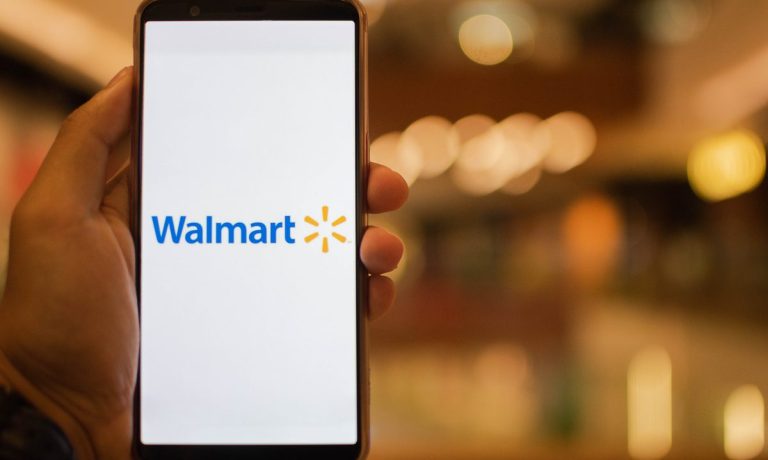Walmart’s FinTech and Super App Future Takes Shape With Pair of Purchases

In the bid to build super apps, designed to bring all manner of digital activities under one digital roof, Walmart is determined to make a big splash in a big way.
As reported Wednesday (Jan. 26), the commerce giant’s FinTech startup is on track to acquire two firms and subsequently relaunch as ONE.
The firms being acquired by the Hazel FinTech (in turn owned in a joint venture between Walmart and Ribbit Capital) are Even Responsible Finance Inc., which enables companies to offer employees earned wage access (Walmart is a customer), and ONE Finance Inc., a neobank complete with a debit card.
Post-acquisition, the Walmart startup will launch under the name ONE, and is explicitly targeting “financial services super app” status.
Read more: Walmart’s FinTech Hazel Acquires Even and One to Build Finance Super App
Now, those are the mechanics of the deals, the buyouts and the re-launch. As a concept, we note that ONE, as a word, as a brand, evokes unity, a slew of services and products under “one” umbrella, and thus hints at the very nature of the super app itself.
In a Wall Street Journal story detailing the game plan for Walmart’s startup, Omer Ismail, incoming chief executive of ONE, took note of Walmart’s already-installed customer base, with around 1.6 million U.S. employees and over 100 million U.S. shoppers (as measured weekly). The CEO told the Journal that the super app will look to become a one-stop financial services shop for customers spanning various socioeconomic strata.
Broad-Based Appeal
That broad-based appeal is exactly what PYMNTS’ recent research has found to be at the heart of the super app’s place within finance. As has been detailed in this digital space in past weeks, we’ve found that as many as 67% of consumers — which equates to a staggering 173 million people — want apps that help them manage their digital lives. And 27 million of those consumers want to do all this through a single app.
And drilling down into the diversity of these consumers: Financial Wellness Seekers (about 18% of the population) covet an app that lets them track personal finances and wealth management; where the average of these consumers is 45 years old, nearly half are women. Fully 69% of those surveyed use banks’ mobile apps already, so the stage is set for them to embrace super apps that help them move though banking, transacting and investing with aplomb.
Others, known as Information Seekers (more than 20% of the population), want an app to help navigate commerce and daily information across entertainment and other activities. Convenience Seekers (just under 11% of those surveyed) might be the consumers most primed and ready for the super app, and these users skew younger. As our surveys have shown, 45% percent of millennials see value in managing every aspect of their digital lives online from a single app. Convenience seekers are also the most flush with cash, so to speak, as just under half of them earn at least $100,000 annually.
Read also: How US Consumers Define the Super App
No matter how you slice it though, the move toward the connected economy, with the app as connective tissue, seems inexorable. Super apps offer an extensible model, where a few core offerings blossom into adjacent mobile services.
As to how digital we’ve all become: Separate PYMNTS research shows that 92% of consumers went online to make a purchase, and more of them made online purchases (75%) than made them at a physical store (64%). And 86% percent of consumers went online to pay a bill at least once.
As Karen Webster wrote, pre-pandemic (it feels so long ago!): “Super apps have opened their own ecosystems to others to develop apps and skills that work only within their super app environments. In doing so, they have become new, robust platforms built on top of the same operating systems that would like to achieve their own super app status rather than playing host to the many others with similar, competing ambitions.”
Larger firms, of course, have the deeper pockets with which to tackle the endeavor. PayPal stands out here, where last fall the company launched its own super app that seeks to eliminate the fragmentation that exists in the shopping and the financial realms, bringing together a host of functions spanning the PayPal wallets, accounts, loyalty and payments (and yes, even crypto). Tabs, linked to a dashboard, enable the consumer to pivot between activities.
See: PayPal’s New Super-App Positioned to Deliver Next-Level Connected Experience
With Walmart’s full-fledged push into the super app space, into streamlining a range of previously far-flung activities into a single digital channel, it seems to bump up directly against PayPal’s ambitions.
The white space is there in the U.S. for these and other players to jockey for attention, for eyeballs and of course for share of wallet. We’ve already noted Walmart’s installed base above, and PayPal, of course, has roughly 400 million active accounts (as of the latest quarter) and tens of millions of merchant accounts.
The fact that the super app has yet to really gain traction in the U.S. stands in marked contrast to other parts of the world, where, for instance, China has WeChat and Singapore has Grab. Europe, as we wrote recently, also is inching toward having a financial super app.
Walmart’s ambitions validate the super app concept in a big way — and now, it’s all about execution.

